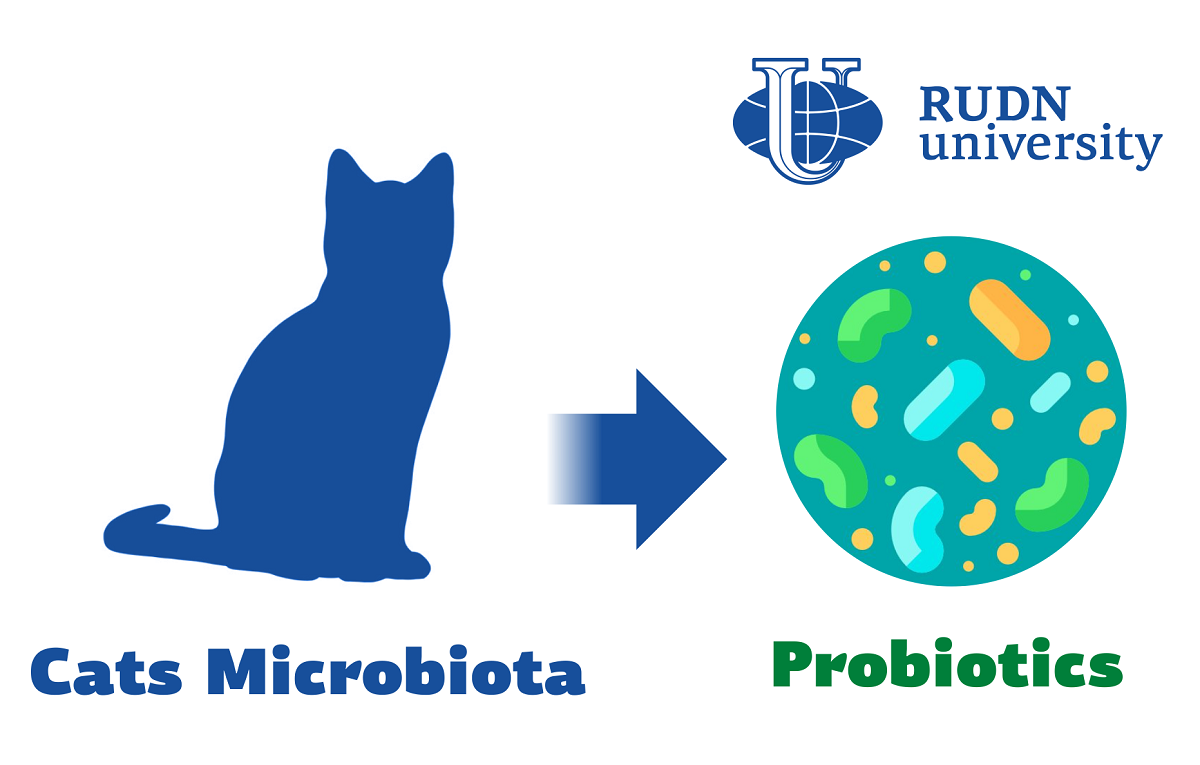RUDN veterinarians have found three promising probiotics for the treatment of cats

One of the most common diseases in pets is purulent inflammation of the skin and soft tissues. Therefore, the search for effective ways to treat them is an important problem of veterinary medicine. In recent decades, scientists have been creating new antibacterial agents, improving aseptic and antiseptic methods, and the number of cases of inflammatory processes continues to increase. One of the promising directions in solving this problem is probiotics. These microorganisms are able to repel pathogenic microbes and do not cause side effects. RUDN University veterinarians studied the microflora of cats and found out which of the bacteria can be probiotics.
“The study of purulent-inflammatory processes remains one of the most complex and urgent problems in veterinary practice, despite the modern method of treatment, new generations of antibacterial agents and the constant improvement of aseptic and antiseptic methods. We have isolated samples of the microflora of healthy cats and the researcher their biologically characteristic take the most optimal strains, which can become the basis of probiotic drugs to combat purulent infections,” — candidate Biological Sciences Alexander Petrov, docent of Department of Veterinary Medicine, RUDN University.
Veterinarians examined the microbiota of 18 healthy cats on the skin, in the mouth, intestines and in the blood. Then, the scientists evaluated biological markers that determine the potential of microorganisms to create probiotic drugs — antibiotic resistance, the ability to adhere, that is, “stick” to surfaces and fight the causative agents of purulent infections. To do this, the researchers measured what concentration of the main antibiotics (gentamicina, methicillina, amoxicillina and otherx) destroys 50% and 90% of the bacteria of each culture, how well the bacteria attach to red blood cells and how many pathogenic microbes (zolotistogo staphylococcusa, Pseudomonas aeruginosa, etc.) they are capable of destroying.
In total, RUDN veterinarians found 214 cultures of microorganisms. Most die under the influence of antibiotics, only five species survived. The most resistant was L. Acidophilus. For comparison, to destroy 90% of the bacteria L. Acidophilus took 1800 μg / cm3 antibiotic gentamicin, and to destroy bifideobacter and B. Adolescentis — only 500.Ethat means that L. Acidophilus is more resistant to antibiotics and therefore, it is necessary to claim to become the basis for probiotic drugs. The best adhesion was shown by L. Plantarum bacteria. In the experiment on all 100%of the red blood cell had an average of eight L. Plantarum bacteria and, for example, only 64% of red blood cells found B. bifidum, and on average only two. The most active against the causative agents of purulent infections was the bacterium L. Acidophilus c antimicrobial activity index of 26,8. This means that pathogenic microbes die out in a cup of Petri within a radius of 13.4 mm from L. Acidophilus. As a result, the most promising for the creation of probiotic drugs, doctors called all three bacteria of the genus Lactobacilli — L. Plantarum, L. Rhamnosus and L. Acidophilus.
“The most promising strains are evaluated or biocompatible with each other. It turned out that neither of the three strains of lactobacilli destroyed each other’s by co-cultivation. This indicates the possibility of using the selected strains ether to obtain probiotic drugs with therapeutic properties,” — Candidate of Biological Sciences Nadezhda Sakhivekina, Doctor of the Department of Microbiology and Virology of RUDN University.
The results are published in Pathogens.
RUDN summarized the results of the scientific competition "Project Start: work of the science club ". Students of the Faculty of Physics, Mathematics and Natural Sciences have created a project for a managed queuing system using a neural network to redistribute resources between 5G segments. How to increase flexibility, make the network fast and inexpensive and reach more users — tell Gebrial Ibram Esam Zekri ("Fundamental Computer Science and Information Technology", Master's degree, II course) and Ksenia Leontieva ("Applied Mathematics and Computer Science", Master's degree, I course).
The National Demographic Report, 2023 Demographic Well-Being of Russian Regions (hereinafter - the National Demographic Report) was prepared by the scientific team of the Institute of Demographic Studies of the Federal Research Center of the Russian Academy of Sciences, the Vologda Scientific Center of the Russian Academy of Sciences, Peoples' Friendship University of Russia, the Center for Family and Demography of the Academy of Sciences of the Republic of Tatarstan, as well as with the participation of leading scientists from the Republic of Bashkortostan, Stavropol Krai, Volgograd, Ivanovo, Kaliningrad, Nizhny Novgorod, Sverdlovsk Oblasts and Khanty-Mansi Autonomous Okrug–Yugra.
RUDN summarized the results of the scientific competition "Project Start: work of the science club ". Students of the Faculty of Physics, Mathematics and Natural Sciences have created a project for a managed queuing system using a neural network to redistribute resources between 5G segments. How to increase flexibility, make the network fast and inexpensive and reach more users — tell Gebrial Ibram Esam Zekri ("Fundamental Computer Science and Information Technology", Master's degree, II course) and Ksenia Leontieva ("Applied Mathematics and Computer Science", Master's degree, I course).
What is your first association with the word “laboratory”? Flasks and beakers? Microscopes and centrifuges? Yes, many of us would answer the same way.
The National Demographic Report, 2023 Demographic Well-Being of Russian Regions (hereinafter - the National Demographic Report) was prepared by the scientific team of the Institute of Demographic Studies of the Federal Research Center of the Russian Academy of Sciences, the Vologda Scientific Center of the Russian Academy of Sciences, Peoples' Friendship University of Russia, the Center for Family and Demography of the Academy of Sciences of the Republic of Tatarstan, as well as with the participation of leading scientists from the Republic of Bashkortostan, Stavropol Krai, Volgograd, Ivanovo, Kaliningrad, Nizhny Novgorod, Sverdlovsk Oblasts and Khanty-Mansi Autonomous Okrug–Yugra.